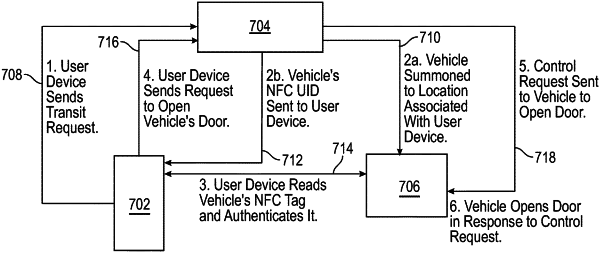| CPC B60R 25/246 (2013.01) [B60R 25/01 (2013.01); B60R 25/245 (2013.01)] | 30 Claims |

|
1. An electronic device, comprising:
one or more processors;
a memory; and
one or more programs, wherein the one or more programs are stored in the memory and configured to be executed by the one or more processors, the one or more programs including instructions for:
initiating a transit request, wherein the transit request requests dispatch of a vehicle to a location of the electronic device;
receiving, from an external device, information in response to the transit request, wherein the information includes first authentication information;
establishing, using a first wireless communication protocol, a first wireless communication channel with the vehicle, wherein communicating via the first wireless communication channel requires that the electronic device is within a first communication range from the vehicle;
receiving, from the vehicle, via the first wireless communication channel, second authentication information;
in accordance with a determination that the second authentication information corresponds to the first authentication information:
establishing, using a second wireless communication protocol different from the first wireless communication protocol, a second wireless communication channel with the vehicle, wherein communicating via the second wireless communication channel requires that the electronic device is within a second communication range, larger than the first communication range, from the vehicle; and
sending, to the vehicle, via the second wireless communication channel, an instruction to unlock a cabin of the vehicle.
|